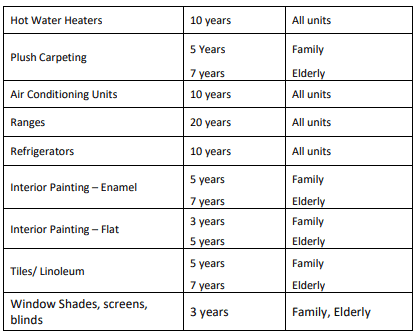Landlords do more than simply sit in an office and collect rent from tenants. It’s their responsibility to make sure every nook and cranny of the building is in good, livable condition. Unfortunately, not every tenant is as qualified as they look on paper. While some degree of wear and tear is expected, there are cases where tenants destroy the living space. Here’s what a landlord needs to know about damage and wear and tear.
Property damage is something that doesn’t happen naturally. Whether it’s accidental or intentional, a damaged apartment can significantly decrease the value of the property.
Here are a few examples of apartment damage:
- Holes in the walls and ceiling
- Broken doors
- Scratch marks on the countertops
- Torn or badly stained carpets
- Cracked bathroom mirrors
- Scuff marks and stains on a wooden floor
- Broken appliances due to misuse
- Pet stains on the carpet and padding
None of these things are natural occurrences. If a tenant moves out and you go to inspect the apartment, it’s unacceptable to find the walls destroyed and floor covered in stains.
What is considered wear and tear?
Unlike property damage, wear and tear happens naturally as a tenant lives in a unit. Wear and tear is simply the decline of the property’s condition with continued use. One could say wear and tear is simply the property getting older, not damage caused by any form of carelessness or neglect.
Here are a few examples of wear and tear:
- Dirty floor grout
- The door handles become somewhat loose
- Small, but noticeable cracks in the ceiling
- Faded coloring due to exposure of UV rays
- Some carpet wear and small stains
- Small paint chips or scuffs
- The bathroom finish on fixtures starts to fade
- Slight damage to window coverings
Things like these are to be expected after a tenant moves out. So, don’t be concerned if you stumble upon a few scratches or scuff marks on the paint.
The Importance of Knowing the Difference
Knowing the difference between typical wear and tear and damage is crucial for a landlord. If there’s actual property damage, it’ll allow you to use the tenant’s security deposit to repair it. However, if it’s just deterioration caused by the use of the property, deposit funds cannot be used.
It’s important to remember that not every apartment will look the same as it did when a tenant moved in. This is especially true if the tenant has lived there for several years. There’s bound to be a few blemishes.
Consider the useful life of property elements.
The useful life is the life expectancy of an item or product. Damage to these items should be pro-rated depending on the cost and the age of the item. Here is a handy chart from the Department of Housing and Urban Development that shows the average life expectancy of products in a rental unit:

Being a landlord isn’t easy as there can be a lot to manage, and having a damaged apartment can make things needlessly difficult. Be sure to use this information to your advantage the next time you have to inspect an apartment.










